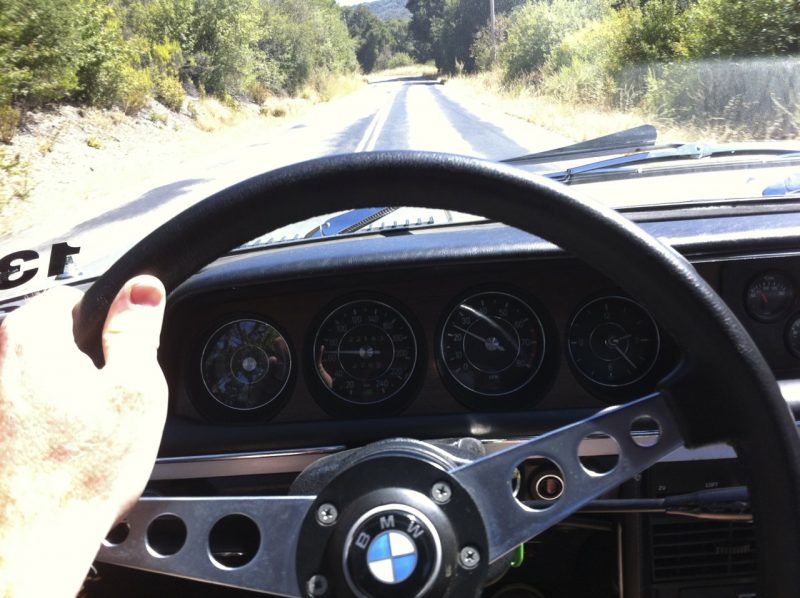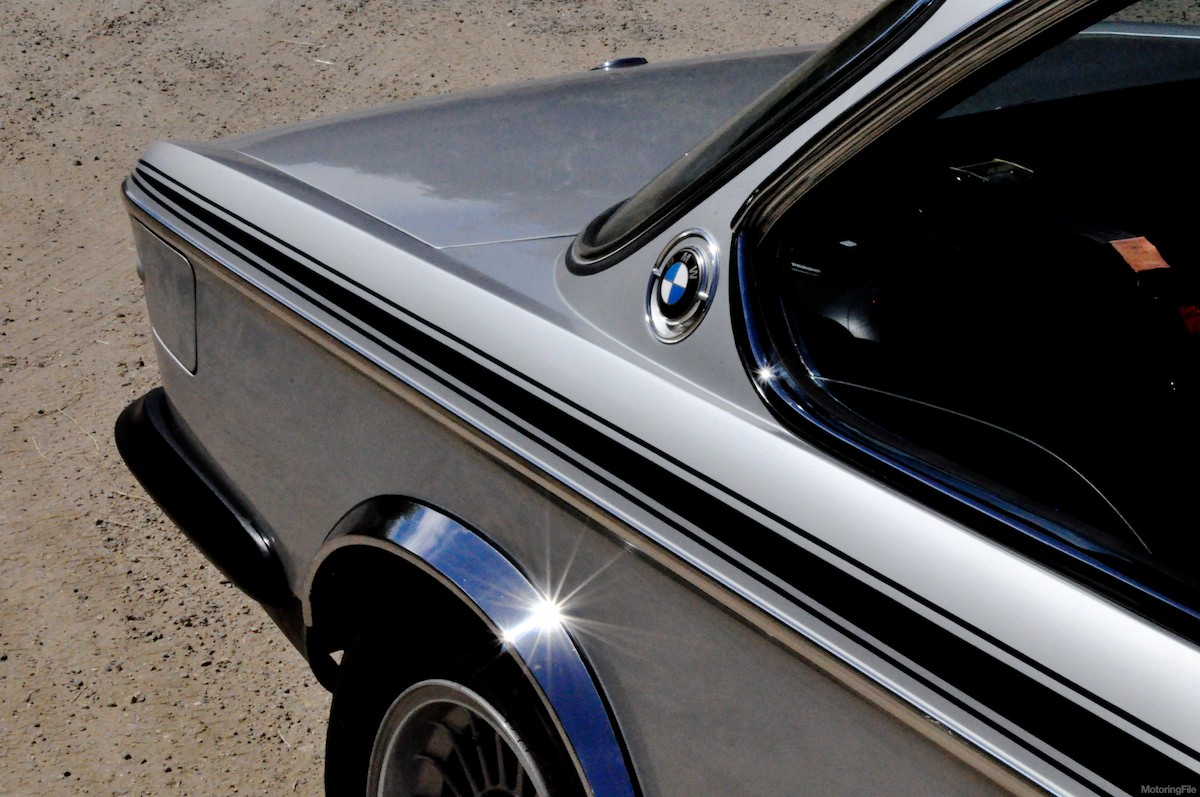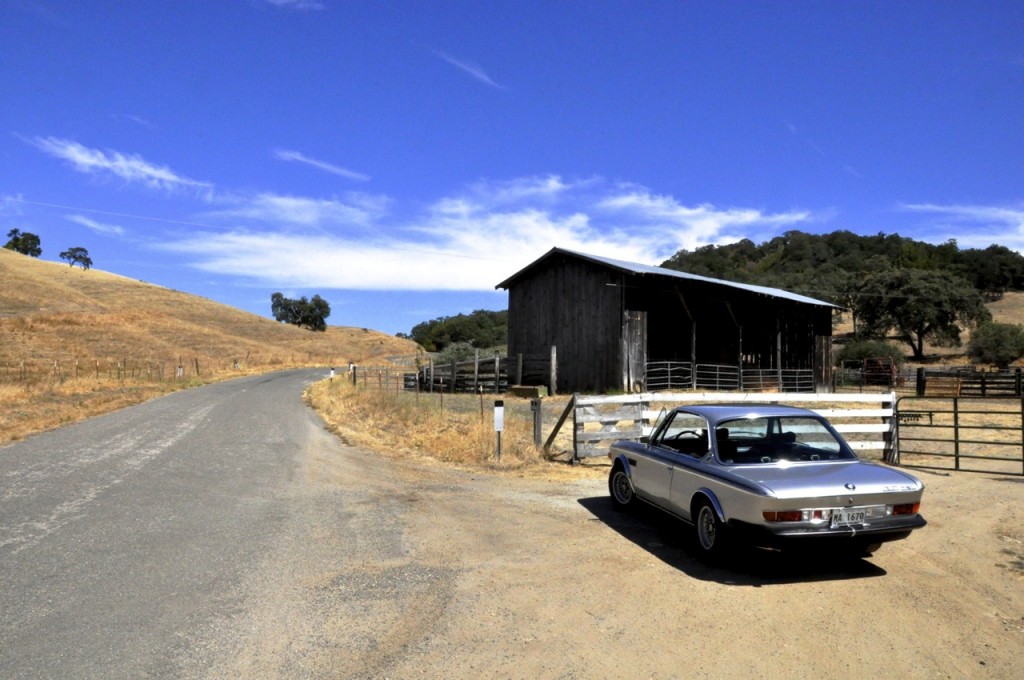Driving the Original M Car – The 1972 BMW 3.0 CSL

Cresting the hill while heading east on Carmel Valley Road, the landscape suddenly went from dense forest to golden hills. It was as if I had entered a yellowing 70’s photo tinged with the promise of a simpler, better life. And with the thin and lively BMW 3.0 CSL steering wheel in my hands, I had it. A glimpse inside a golden era that seems out of reach 50 years later. Turn after turn the BMW 3.0 CSL wound up and down the rev range and the sounds brought it all to life.

Like the adoring fan who would be well advised to avoid meeting their hero, some boyhood dream-cars should never be driven by those who lusted after them. It’s a common for excitement to turn to disappointment within a few miles behind the wheel of a classic car. But the BMW 3.0 CSL is a different breed.
Born from motorsport, the CSL was BMW’s attempt to win the European Touring Car Championship. To compete more effectively the CSL was born as a way to homologate a series of changes to the less than successful E9 3.0 CS race cars. And key to this is that L in CSL which stood for leight (light). In the BMW 3.0 CSL is meant thinner steel, less trim, aluminum doors, bonnets, and boot lids, and even Perspex side windows.
The engine was also bumped slightly to 3,003 cc (183.3 cu in) by increasing the engine bore by one quarter of a millimeter (resulting in 200 hp). There were other changes but you get the idea; BMW was tired of losing touring car races and would not sit idly by as Mercedes and Ford continued out-pacing them. The result was a BMW like none before it and a completely new way of thinking from Munich. And perhaps most important of all the birth of the BMW M Division (in all but name).

Our test car being a 1972 means that there’s no aero package that the 1973 CSL received (and was famous for). Just as well since I wasn’t interested in attracting too much attention. Nor did it matter from behind the wheel on one of the best roads in America.
Carmel Valley Road is one of the most celebrated routes in central California and it’s one that has eluded me for years. Sweeping at one moment and tight and twisty at the next, Carmel Valley is an epic drive through valleys and over hills that challenges continuously. And in a 49-year old car that I had never driven, it commanded a hell of a lot of respect.

The CSL tested is a 1972 example (one of 252 that year) plucked straight from BMW ‘s Spartanburg museum. It has 22,200 kilometers (under 14,000 miles!) on it and is worth an estimated easily at $400,000 given its provenance. Luckily I didn’t know that last number until I stepped out of the car.
The CSL’s 3.0 litter inline six is defined by sound, torque and its eagerness above 5000 rpm (which feels almost shocking compared to my BMW 2022 from the same era). Most of Carmel Valley Rd. is done in 3rd (with only four speeds this coupe has long legs) but heel to toe and drop it into second and there’s music under the hood. You can quickly feel and hear a direct lineage some of the best inline six engines that came afterwards.
The engine is so eager as the revs climb it’s almost shocking at first. Combined with a willing chassis and beautifully communicative steering and the CSL seems to beg you to push it. Which is exactly what I did mile after mile through tight forests, over hills and down flowing straights.

Steering feel isn’t as immediate as the BMW 2002 from the same period but it’s appropriate for the size of the CSL and the market that was intended. And make no mistake, this car is miles more communicative than a modern BMW.
More impressive than the steer was the balance of the car as the road went from flowing sweepers to tight corners. With controlled power and measured steering input I could immediately place the car anywhere and get it to do almost anything. I could feel a faint connection to the E28 M5 (which I had just come from) but in lighter, smaller form.
But the CSL is no muscle car by today’s standards and it feels a world away from today’s turbocharged M cars. It’s power is delivered evenly and with a crescendo at the top-end to be a point and shoot device that we know M cars to be these days. That also Unlike most M products over the last 20 years, this is a chassis not dominated but an engine but rather part of an equation greater than the sum of its parts.
And that equation has created excellence – even 50 years after it’s launch. Even with broken and uneven pavement of Carmel Valley Rd, the CSL was composed and controlled while being hustled.

Yet you can’t escape the fact that the BMW 3.0 CSL is an early 70’s GT car. You can keep up with modern machinery in the corners (as I did with an impromptu lead follow with an E60 M5) but there isn’t an endless pile of torque powering you out of corners. Work and even finesse is required to drive the CSL fast. But that’s the point. This is an involving car that you need to connect and understand the get the most out of. We so often lose the joy of the drive in modern machinery because we simply don’t have to think and work too hard. CSL requires more from the driver and in turn rewards in ways a modern M car never could.
As Carmel Valley started to straighten and the miles clicked away I realized I had been driving for what felt like hours due east. Regrettably I knew I had to turn around hand the vintage key back and watch CSL get loaded back into a truck. The only thing that comforted me was knowing I had to take the same way back.

I turned off the road, got out and leaned up against the fence to soak it all in. For a moment, staring at the CSL with the golden countryside in the background I soaked it up one last time.
Driving the BMW 3.0 CSL was nothing less than a boyhood dream come true. Getting back into the driver’s seat I couldn’t help but be reminded of the toy I had of the CSL as a child. Now the real thing was literally in my hands and under my foot. This is a hero car and you know what they say about meeting your hero’s. But the CSL is too good of a car (now and then) to not meet and exceed any expectations. It’s primal BMW at its best and as it turns out, that can transcend time.